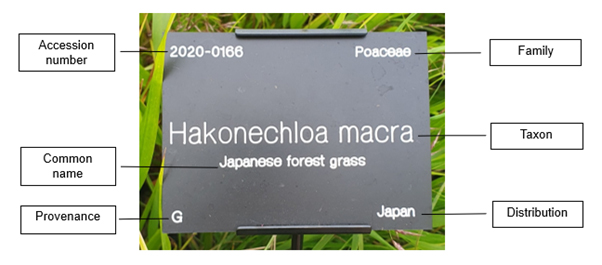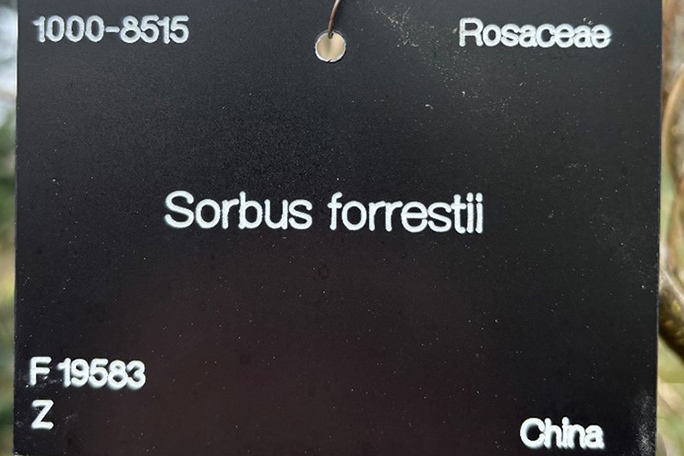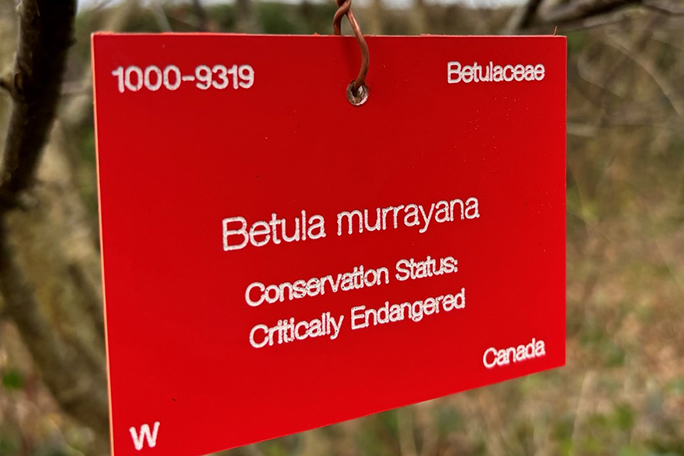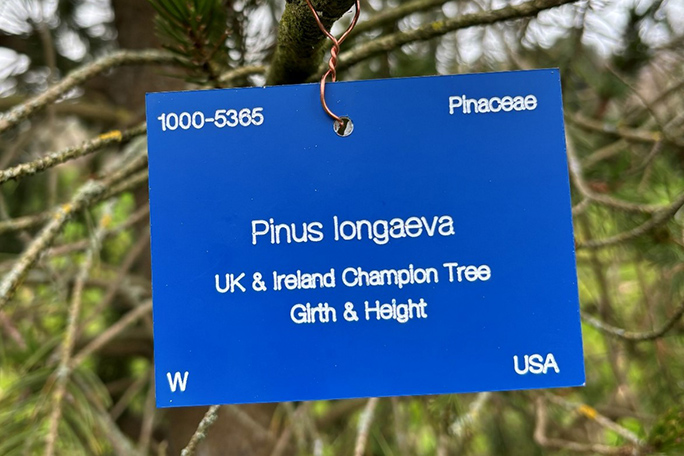Labels not only act as an educational tool for visitors, but are essential for the curation of the garden. Some of the information on labels can be a little confusing at first, so this guide will explain the different pieces of information in our plant labels to make it easier to navigate our living collection.

Accession number
This number is the plant's unique identifier, and links it to the garden’s database. It consists of eight digits. The first four represent the year the plant was accessioned (added to the garden’s collection), while the last four are sequential for that year.
In the label above, the plant was added to the garden’s collections in 2020 and was the 166th plant accessioned in that year. If an accession number starts with 1000 rather than a year, this means that the record was transferred from our old database, and accession information is differently stored.
Family
Plant families are groups of plants brought together by botanists and taxonomists based on their shared common characteristics, such as flower, fruit structure, and evolutionary histories. In this instance, the family is Poaceae, which includes all grasses.
Taxon
The plant's scientific name appears in the centre of the label, comprising the genus and species. Subspecies, variety, and cultivar names are included where relevant.
Common name
If there is a widely used common name, it is provided beneath the scientific name for easy recognition.
Provenance
A letter in the bottom left corner of our plant labels is used to indicate the plant's provenance.
- G indicates the plant is of garden origin, meaning it has come from cultivated stocks, i.e. from a nursery or garden centre
- U is used if the origin of the plant is unknown
- Where there is a W on the label, this indicates that the plant is of wild origin, i.e. grown from seed collected on an expedition
- Z indicates the plant is a cultivated plant descended from one of known wild origin. This means that the plant is a cutting of a plant known to have been collected in the wild.

Sometimes labels marked with a W or Z will also feature a plant collector code, a special signifier which indicates the individual or expedition that collected the plant.
Distribution
This section indicates the plant's natural habitat.
Red and blue labels
We like to highlight the special plants in our living collection, whether they be threatened in the wild or the tallest of their kind!

Look out for our red labels around the garden, which indicate that the plant is has been deemed endangered or critically endangered in its natural habitat. Conservation is central to the mission of botanic gardens and our garden team care for many threatened genera in our living collection.

If a plant has a blue label, this means that it is a Champion Tree. These are individual trees that are remarkable because of their height, size or significance. Ness has several noteworthy specimens, which now have blue labels. Look out for these during your next visit!
Back to: Ness Botanic Gardens